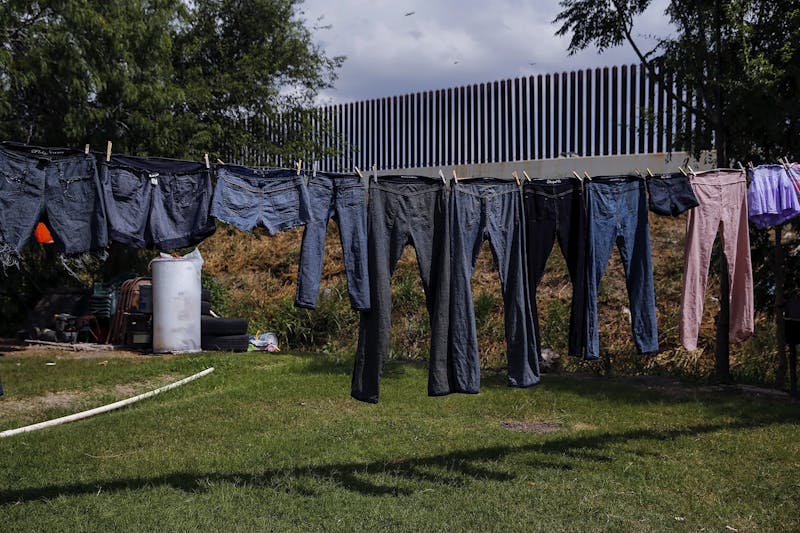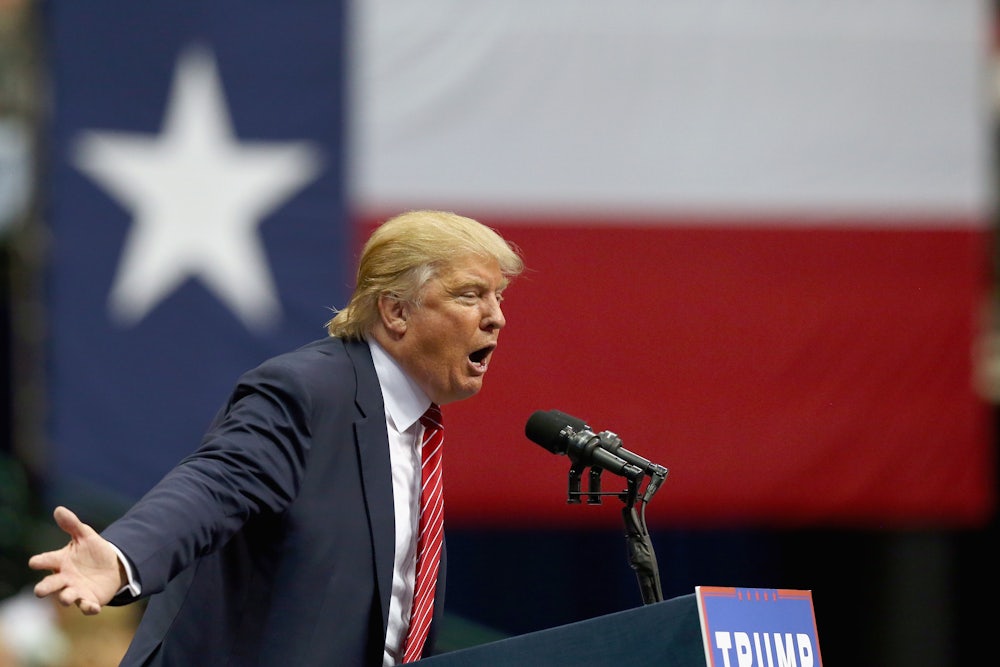Terry Bishop, a West Texas native with a monogrammed belt buckle and a leather holster for his flip phone, looks out over the 2,000 acres of farmland he owns near the small town of Presidio. His property is a five-minute walk from the Mexican border, and Bishop knows what’s coming. “I’ve got no doubt he’s going to build it,” he says. “He promised he would.”
By “he,” Bishop means Trump. And by “it,” he means the wall. If it gets built, it will almost certainly pass through Bishop’s land—as well as property owned by thousands of other Texans. But as with the previous attempt to build a border wall, during the presidency of George W. Bush, those most intimately impacted by the plan are among its sharpest critics.
There’s a lot to criticize about Trump’s plan for a border wall. It will be enormously expensive, bitterly divisive, and most likely ineffective; it will also slice through Big Bend National Park and other wildlife sanctuaries, disrupting the migration of more than 100 threatened and endangered species. But the reason why many Texans oppose the wall boils down to one simple fact: It will require them to give up their land.
Private property is central to Texas mythology, and there’s a lot of it: Some 95 percent of the land in the Lone Star State is privately owned, far more than in any other state along the border. (In Arizona and California, the federal and state governments own more land than private citizens do.) Land ownership often stands in for other things that Texans feel proprietary about: independence, self-sufficiency, not being told what to do. Texas is the only state in the nation with a Landowner’s Bill of Rights, which makes seizing property via eminent domain a costly and time-consuming prospect. “As a state, we probably lead the nation when it comes to private property,” says Richard Thorpe, president of the Texas Southwestern Cattle Raisers Association.
Those rights may not mean that landowners can stop a wall being built. But they can definitely slow down the process, jack up the cost, and force the Republican Party to take Texas ranchers and farmers to court to seize their land by eminent domain.
That, in fact, is exactly what happened the last time the government tried to build a wall. In 2006, Congress passed the Secure Fence Act, authorizing the construction of more than 700 miles of barriers between the United States and Mexico. But when plans for the border fence were drawn up, landowners in Texas were incensed that the proposed path veered as much as a mile inland from the Rio Grande, cutting through backyards, commercial lots, and small farms. More than 300 property owners filed lawsuits to block the wall from being built on their land. Among them was Eloisa Tamez, a nursing professor and indigenous activist, who went to court to protect her property, which was deeded to her family in 1767 by the King of Spain. Even though the government has won every court battle so far—most of which involved less than an acre of land—the process has been long and costly. Tamez’s lawsuit, United States of America v. .26 Acres of Land, took seven years and hundreds of court filings to sort out.
In the end, only about 100 miles worth of fencing wound up being built in Texas along its 1,254-mile border with Mexico. And the piecemeal and politicized nature of the process wound up marooning several swaths of property—including a Brownsville golf course—on the Mexico side of the fence. The barrier is “more holes than it is fence,” Denise Gilman, director of the Immigration Clinic at the University of Texas in Austin, told reporters last year.

This time around, building the border wall may be even more difficult and expensive. For starters, not a single member of Congress from Texas has offered a rousing endorsement of Trump’s plan. “Building a wall is the most expensive and least effective way to secure the border,” says Rep. Will Hurd, a Republican whose district includes 800 miles along the border. “Many areas in my district are perfect examples of where a wall is unnecessary and would negatively impact the environment, private property rights, and economy.”
What’s more, state lawmakers are considering several bills that would give landowners in Texas a stronger hand in negotiations if the government tries to seize their land through eminent domain—which would likely result in them winning higher payouts for their property. Thorpe, the head of the cattle ranchers association, is personally a Republican, a fan of the president, and a supporter of “secure borders.” But in a legal war between the Trump administration and Texas ranchers, his allegiance is with the landowners. “If down the road President Trump starts using the power of eminent domain in Texas,” he says, “we really feel that these bills will help our landowners in the state, including those along the border.”
The proposed laws would also strengthen the hand of landowners who are embroiled in a lawsuit with Energy Transfer Partners, the same company that’s responsible for the Dakota Access Pipeline. Energy Transfer wants to build a pipeline through Presidio to supply Mexico with natural gas, but the backlash has been surprisingly vigorous for such a lightly populated area. NO PIPELINE bumper stickers are plastered on pickups throughout the county; in February, an 80-year-old veteran was arrested for chaining himself to a fence surrounding the pipeline company. The protesters don’t break down into neat ideological categories: Terry Bishop, the local farmer, says that “even some very wealthy landowners,” including longtime Republicans, have joined in the battle.
For his part, Bishop doesn’t think that Trump’s wall makes sense. He’s nostalgic for the days when the border with Mexico was more porous, when he and his high school classmates would sneak under the flimsy, unguarded fence and go drink cervezas at the Rojana Hotel in Ojinaga. To him, Presidio feels much closer—both geographically and spiritually—to its sister city across the river than to the air-conditioned conference rooms in Washington where border walls are planned. But he doesn’t relish the coming fight.
“If I wanted to be in the middle of things, I’d live somewhere else,” he says. “I kind of just want to be left alone. I don’t bother other people, and I don’t want people to bother me. But sometimes you don’t have a choice. Maybe since I saw what happened after 2006, I’m resigned to the fact that the government has all the time, money, and lawyers. In reality, none of us has any real power. If they decide they’re gonna build this, I can’t stop them.”
